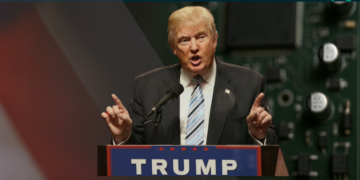- Caroline Ellison’s pivotal testimony unveils the collapse of a cryptocurrency empire and exposes fraudulent practices.
- Highlights of accusations against Sam Bankman-Fried involving embezzlement of funds, potentially resulting in severe legal penalties.
- Overview of the intricate web of financial deception and prosecution’s emphasis on alleged fraudulent activities in the cryptocurrency realm.
Caroline Ellison, a central figure in the government’s case against Sam Bankman-Fried, provided more than nine hours of testimony spanning two days. The courtroom watched as she recounted the tumultuous final days of the cryptocurrency empire she helped construct.
During the emotionally charged testimony, Ellison shared conflicting emotions regarding the harrowing period. Despite labeling it as the “worst week of my life,” she conveyed to Bankman-Fried that it was simultaneously the “best mood I’ve been in in a year.” Tears welled up as she expressed relief, stating that she no longer had to maintain a façade, even though she grappled with deep regret for those they had “betrayed.”
The moment she had dreaded came in November, a rapid collapse at Alameda Research and FTX under Bankman-Fried’s direction. Ellison testified that she, at Bankman-Fried’s direction, had distributed misleading balance sheets to lenders, concealing billions siphoned from FTX customer accounts.
Prior to FTX’s collapse, Ellison unveiled shocking financial details. FTX owed clients $12 billion, yet it possessed a mere $4 billion in client holdings, contrary to Bankman-Fried’s public assurances. The missing $8 billion had been diverted to cover debts and extend loans to Bankman-Fried and others, according to prosecutors.
Bankman-Fried, facing seven counts of fraud and conspiracy, has pleaded not guilty. Ellison, with a history of dating Bankman-Fried during her tenure at Alameda, struck a cooperation deal and admitted guilt to seven counts of fraud and conspiracy.
Ellison painted a vivid picture of Bankman-Fried’s active involvement, portraying him as the orchestrator of criminal activities within his inner circle. Prosecutors argue that he pilfered billions from FTX customer funds to offset Alameda’s losses, enriching himself and others in the process.
If convicted, Bankman-Fried could face a sentence of up to 110 years. The prosecution builds its case on the alleged diversion of funds from FTX customers to finance personal endeavors, including lavish real estate acquisitions and substantial political campaign donations.
The ongoing trial reveals a complex web of deception, where Alameda had a concealed line of credit with FTX, sourced from unsuspecting customer deposits. Ellison’s revelations shed light on the true motivations driving FTX’s establishment in 2019, primarily to secure capital beyond Alameda’s third-party loans.
On Wednesday, Ellison delved into her past personal to-do lists, one of which tracked Bankman-Fried’s concerns. Notable entries encompassed strategies to enhance FTX market share and potential acquisitions, reflecting the defendant’s relentless drive to expand the business.
As the trial proceeds, the courtroom remains captivated, awaiting further insights into the intricate allegations and the defense’s counterarguments set to unfold.














